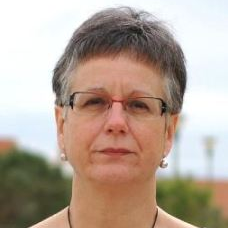Biomaterials and Symmetry
A special issue of Symmetry (ISSN 2073-8994). This special issue belongs to the section "Life Sciences".
Deadline for manuscript submissions: closed (31 December 2019) | Viewed by 13669
Special Issue Editors
Interests: designing and developing new polycrystalline biomaterials (dense and porous) with controlled microstructures; making use of appropriated phase equilibrium diagrams and to study, not only their physical properties, but also their behavior in vitro (stem cells) and in vivo (bioactivity in rats and rabbits); the tissue engineering field study of the tissue–ceramic implant interfaces is of particular interest
Special Issues, Collections and Topics in MDPI journals
Interests: surface analysis of biomaterials
Special Issue Information
Dear Colleagues,
Morphogenesis is the developmental waterfall of pattern formation, body plan establishment, and the architecture of mirror-image bilateral symmetry of many structures, concluding in the adult form. Tissue engineering is the emerging discipline of design and construction of spare parts for the human body to restore function based on principles of molecular developmental biology and morphogenesis governed by bioengineering. The three main ingredients for both morphogenesis and tissue engineering are inductive signals, responding cells, and the extracellular matrix. Among the many tissues in the human body, bone has considerable powerful for regeneration and is a prototype model for tissue engineering based on morphogenesis.
Properties of biomaterials and scaffolds, such as pore structures, mechanical properties and degradation, play an essential role in accomplishment of their functions for tissue repairing or regeneration. Surface characteristics of biomaterials, whether their topography, chemistry or surface energy, play an essential part in cell–material interactions and implant integration.
It is, therefore, my immense pleasure to invite you to submit a manuscript for this Special Issue, “Biomaterials and Symmetry”. Full research articles, short communications and comprehensive review papers covering all aspects of biomaterials design, tissue engineering, and applications of biomaterials, but not limited to them, are welcome.
Prof. Dr. Piedad N. De Aza
Dr. Pablo A. Velasquez
Dr. Angel Murciano
Guest Editors
Manuscript Submission Information
Manuscripts should be submitted online at www.mdpi.com by registering and logging in to this website. Once you are registered, click here to go to the submission form. Manuscripts can be submitted until the deadline. All submissions that pass pre-check are peer-reviewed. Accepted papers will be published continuously in the journal (as soon as accepted) and will be listed together on the special issue website. Research articles, review articles as well as short communications are invited. For planned papers, a title and short abstract (about 100 words) can be sent to the Editorial Office for announcement on this website.
Submitted manuscripts should not have been published previously, nor be under consideration for publication elsewhere (except conference proceedings papers). All manuscripts are thoroughly refereed through a single-blind peer-review process. A guide for authors and other relevant information for submission of manuscripts is available on the Instructions for Authors page. Symmetry is an international peer-reviewed open access monthly journal published by MDPI.
Please visit the Instructions for Authors page before submitting a manuscript. The Article Processing Charge (APC) for publication in this open access journal is 2400 CHF (Swiss Francs). Submitted papers should be well formatted and use good English. Authors may use MDPI's English editing service prior to publication or during author revisions.
Keywords
- Computer Design
- Scaffolds
- Bone graft biomaterials
- Tissue Engineering
- Cell–material interaction
- Bone tissue-material interaction
- Processing
- Applications
- Biocompatibility
- Biodegradation






